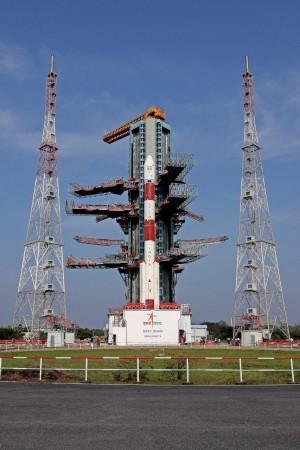India on Thursday successfully placed its 42nd communication satellite CMS-01 (formerly GSAT-12R) in the geosynchronous transfer orbit, with a life span of seven years to provide services in Extended-C Band of the frequency spectrum.
Indian Space Research Organisation (ISRO), the country's space agency said the satellite will cover Indian mainland, Andaman and Nicobar and Lakshadweep Islands and will replace GSAT-12 that was launched on July 11, 2011 with a mission life of eight years.
ISRO Chairman K.Sivan said, "In four days time the CMS-01 satellite will be taken to its intended geosynchronous orbit. The satellite's solar panel has been deployed." ISRO's next rocket would fly in Feb-March 2021 on PSLV-C51 which will be a special one for ISRO as well as for the country.

Sivan said the rocket will be carrying India's first earth observation satellite from a start-up called Pixxel. The rocket will also carry communication satellite built by students part of SpaceKidz team and another satellite built by consortium of three Indian universities.
"The primary payload for PSLV-C51 rocket will be a Brazilian satellite weighing between 600-700kg," Sivan told IANS. He also said Team ISRO has a busy schedule ahead with the launch of Aditya satellite, Gaganyaaan-India's human space mission, realisation of small rocket Small Satellite Launch Vehicle (SSLV).
The Thursday space mission is second and last from this rocket port and third for the country this year. On November 7, ISRO launched radar imaging satellite EOS-01 (Earth Observation Satellite-01, formerly RISAT-2BR2) and nine foreign satellite for a fee with a PSLV rocket. Earlier on January 17, 2020, ISRO launched 3,357 kg communication satellite GSAT-30 by the European space agency Arianespace rocket Ariane 5.
New naming scheme
CMS-01 is the first communication satellite that ISRO has orbited under its new satellite naming scheme as ISRO has decided to go generic in naming its satellites. It had earlier named its earth observation satellites as EOS and the communication satellites are being named as CMS.
"Nowadays satellites have multiple payloads for varied users and hence a thematic satellite may be a misnomer and ISRO might have decided to go for a generic name," M. Annadurai, who retired as Director, U.R. Rao Satellite Centre (URSC), formerly ISRO Satellite Centre, had told IANS.
Be that as it may, at about 3.41 p.m. the 320 tonne-PSLV-C50 rocket blasted off from the second launch pad here and slowly rose-up towards the skies with thick orange flame at its tail. The rocket slowly gained speed as it went up while emitting a rolling thunder sound.
About 20 minutes into its flight, the PSLV-C50 rocket ejected CMS-01 into geosynchronous transfer orbit (GTO) and from there, the satellite will be taken up and positioned at geosynchronous orbit.
The Indian space agency plans to launch its new small rocket Small Satellite Launch Vehicle (SSLV) carrying EOS-02 (Earth Observation Satellite), and Geosynchronous Satellite Launch Vehicle-F10 (GSLV) carrying EOS-3 before the close of 2020. The other Indian satellites that are ready for launch are GISAT and Microsat-2A.

















